Hey all! Real Farmer Jeff here.
Upside-down gardening might sound like a gimmick at first, but it’s actually a clever, practical solution for growing healthy, productive plants – especially if you’re short on space or dealing with pets, pests, or limited garden beds.
Instead of planting in the ground and managing sprawling vines or heavy trellises, you can flip the script and let gravity do some of the work.
In this blog post, I’m going to share with you exactly how you can incorporate upside-down gardening into your space, as well as what products I recommend for this method.
Let’s get started!

What Can You Grow Upside Down?
Not every plant is a great candidate for upside-down growing, but several do surprisingly well. Here are some of the most popular options:
- Tomatoes – The classic choice for upside-down systems.
- Peppers – Bell and hot varieties adapt well.
- Cucumbers – Especially compact or bush types.
- Eggplant – Smaller varieties like ‘Fairy Tale’ are best.
- Strawberries – Perfect for hanging and easy to pick.
- Herbs – Basil, oregano, and mint can be planted in the top side of the container, giving you a dual-purpose setup.
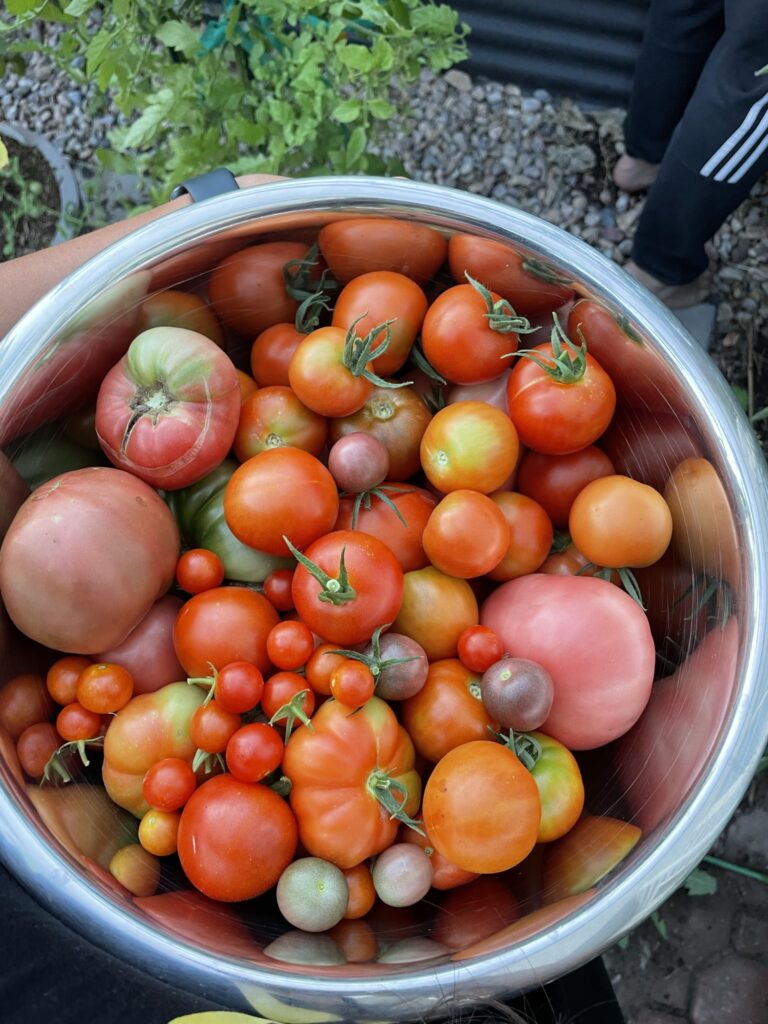

Why It Works
At first glance, growing plants upside down seems like it would confuse them—but plants are incredibly adaptive. They have built-in responses that guide their growth:
- Phototropism: Stems and leaves grow toward light. Even when a tomato plant is hanging down, the vines will naturally start to curve up toward the sun.
- Gravitropism (or geotropism): Roots grow in the opposite direction—downward—responding to gravity.
There are two competing forces on the roots. Gravity will still promote root growth downward. However, roots will search for water and air which will promote root growth upwards (since the plant is now flipped). Flipping a plant isn’t ideal from a root perspective, but the plants will adapt. At the end of the year I’m interested to see how far upward the root ball extends.
Growing Tomatoes Upside Down
Tomatoes are especially well-suited for this method.
You may have seen DIY versions using 5-gallon buckets with holes drilled in the bottom – but I went with upside-down grow bags (pictured) made specifically for this style of gardening.
They’re breathable, easy to hang, and eliminate the mess of cutting buckets or building frames.
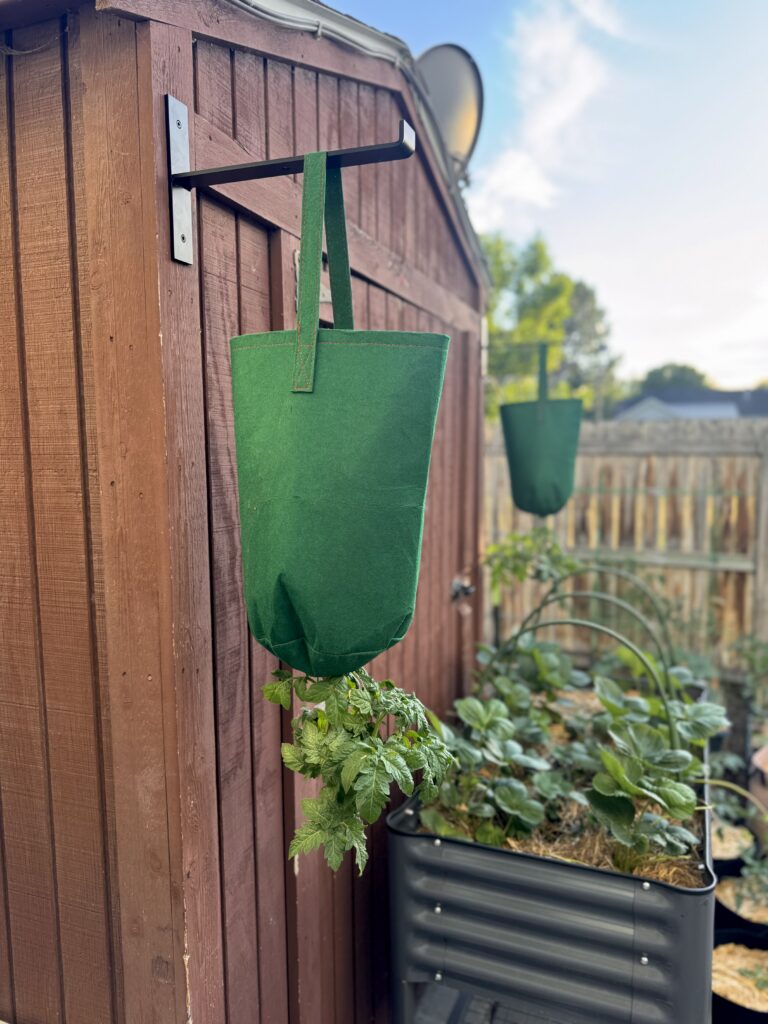
Do Tomato Vines Need Extra Support?
Usually, no! The vines of small to medium-fruited tomato varieties are surprisingly strong and can support the weight of the fruit while hanging. Gravity actually helps by keeping the plant stretched out, rather than tangled on the ground.
That said, if you’re growing larger tomatoes or notice the plant producing heavy clusters, the base of the vine might start to bend or sag.
If that happens, you can add some light support (like a fabric strap, elastic, or soft twine) to gently redirect the weight or brace it from above.

What If the Vines Curl Upward?
If your tomato vines are curling or turning upward, good news! This is a healthy sign.
The plant is responding to light through phototropism, bending its stems upward to soak in more sunlight. This behavior maximizes photosynthesis and actually helps the plant grow stronger and more productive.
Pest Control Perks
One of the biggest advantages of growing tomatoes upside down is how it naturally reduces pest problems. When plants are suspended above the ground:
- Pets like dogs are physically blocked from trampling or chewing on the plants.
- Soil-dwelling pests like cutworms, slugs, and pill bugs can’t easily reach the plant.
- Crawling insects such as aphids or ants have a harder time making their way up the vines.
- Tomato hornworms are less likely to find their way onto your plants, especially if you’re growing on a porch or balcony.
- There’s also less risk of fungal diseases that thrive in wet soil or dense ground-level foliage, thanks to improved air circulation.

Pros and Cons of Upside-Down Tomato Growing
| PROS | CONS |
| No need for trellising or cages – gravity supports the plant | Limited root space – small containers may restrict growth and yield. Also roots don’t naturally want to go against gravity in search of water, oxygen, and nutrients. |
| Keeps plants off the ground and deters dogs, rabbits, and crawling pests | Needs regular watering, dries out faster in sun or wind |
| Better air circulation, thus reducing blight and mildew | Weight can be an issue – needs strong support once filled |
| Moisture trickles directly to roots. Watering from above will encourage the roots to move upwards to access the water. | Heavy fruit may need extra support |
| Less prone to weed invasion | Less ideal for large varieties (stick with compact types!) |
| Saves space – great for patios, balconies, and tight areas | Upfront setup – more effort and cost than traditional planting |
| Portable and easy to move for sun or storm protection | |
| Promotes phototropism (plants naturally turn toward sunlight) |

Best Tomatoes for Upside-Down Growing
Not all tomato varieties are created equal when it comes to upside-down gardening. Heirlooms may look amazing, but their size and weight can be hard to manage in a hanging setup. Avoid beefsteak or heirlooms unless you’re willing to reinforce the vine and hanging system. For best results, choose varieties that are compact, productive, and not too heavy. Here are some top picks:
- Cherry and Grape Tomatoes:
- Super Sweet 100
- Sun Gold
- Black Cherry
- Juliet (grape)
- Roma & Plum Tomatoes:
- San Marzano
- Plum Regal
- Amish Paste
- Bush (Determinate):
- Bush Early Girl
- Patio Princess
- Husky Red
- Tiny Tim
Setting Up Your Upside-Down Garden
If you’re ready to try this method yourself, here’s a simple breakdown of how to set things up:
What You’ll Need:
- Upside-down grow bag or 5-gallon bucket with a hole in the bottom
- Sturdy hook, beam, or overhead support
- Potting mix (lightweight with good drainage)
- Compost or slow-release fertilizer
- Your chosen tomato start or seedling (4–6 inches tall works best)

Step-By-Step Instructions:
- Prep the Container: If using a 5-gallon bucket, drill a 2–3” hole in the bottom. If using a grow bag, you’re ready to go.
- Insert the Tomato Plant: Gently feed the tomato seedling through the hole from the inside out. The leaves should come out while the roots stay inside the container.
- Add Soil Mix: Fill the container with potting mix, leaving a few inches at the top.
- Hang the Planter: Use a strong hook or bracket attached to a beam, pergola, or fence post. Make sure the support can handle the load (at least 40–50 pounds for large setups).
- Water Slowly and Regularly: Water from the top. The moisture will seep down through the root zone and out through the vine opening. During hot weather, you may need to water daily.
- Watch It Grow (and Turn Upward!): Don’t worry when the vine starts curling up toward the light – that’s a sign of healthy phototropic growth.
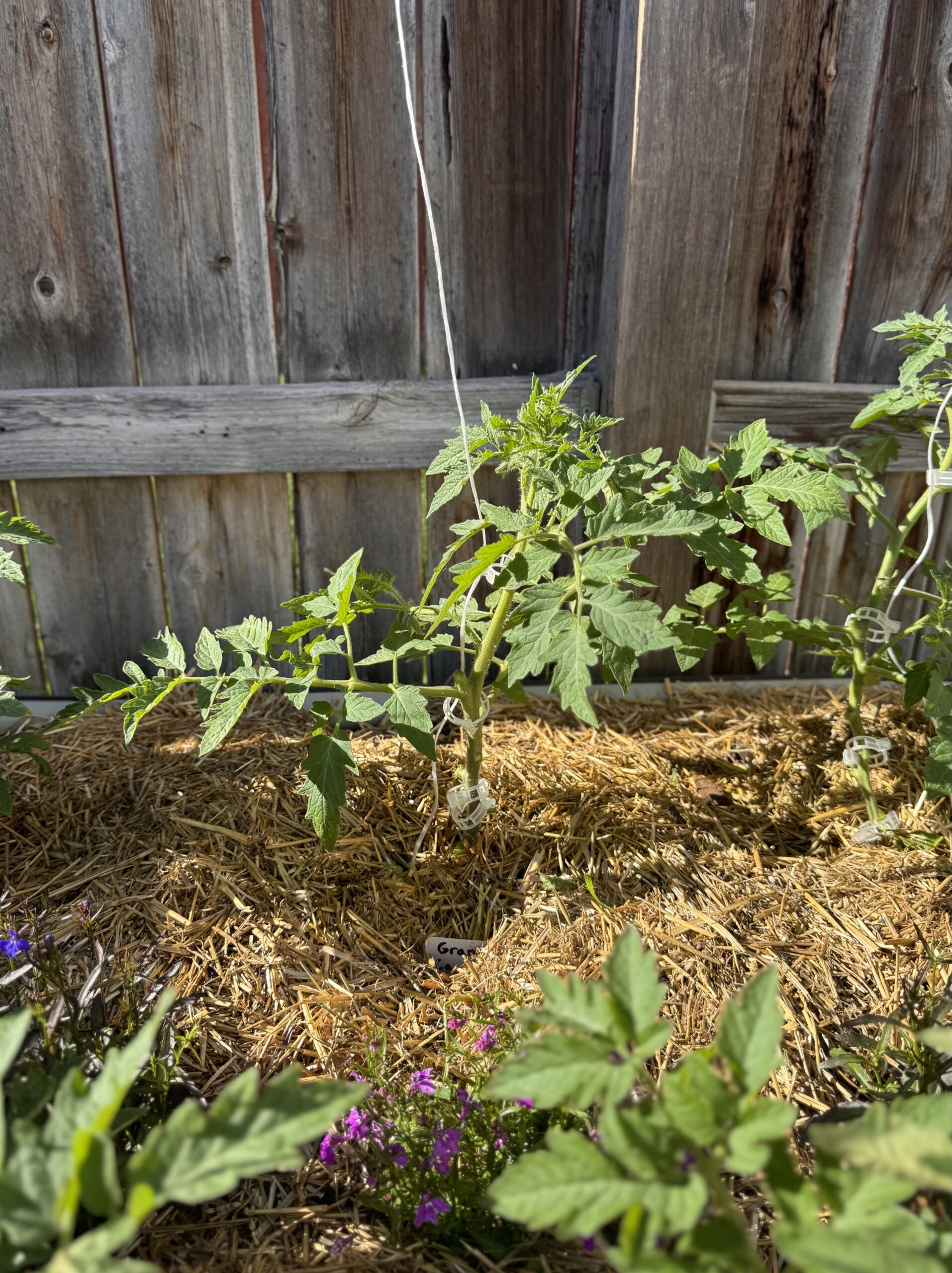
Tip: Add mulch or cover the topsoil with straw to reduce evaporation and keep roots cool.
Upside-down tomato growing is a real solution for gardeners with limited space, active pets, or just a love for experimenting. With the right setup and care, it’s completely possible to grow strong, healthy tomato plants that curl up toward the sun and yield just as much fruit (sometimes more!) than their in-ground counterparts.
Thanks for reading along, guys! If you enjoyed this blog post, check out my other gardening blog posts:
- How to Start a Garden on a Budget for Under $100
- Essential and Nice-to-Have Garden Products for Your Perfect Setup
- My Garden Setup: 3 Best Garden Containers for Every Gardener
- Understanding Garden Light and Shade: A Simple Guide
- How to Build a Homemade Trellis Using Cattle Panel
Follow me on social media for daily content and instructional videos about gardening!
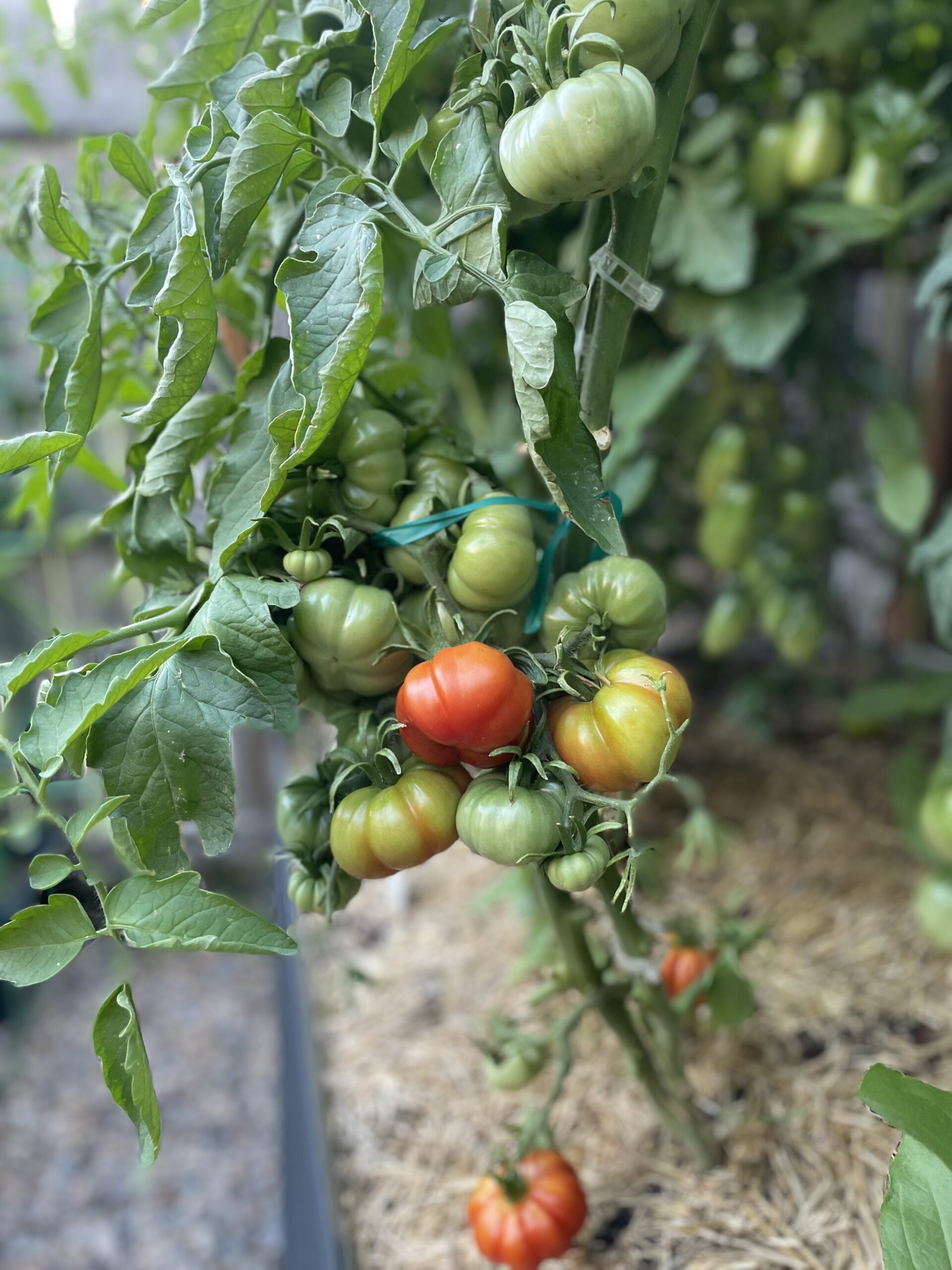




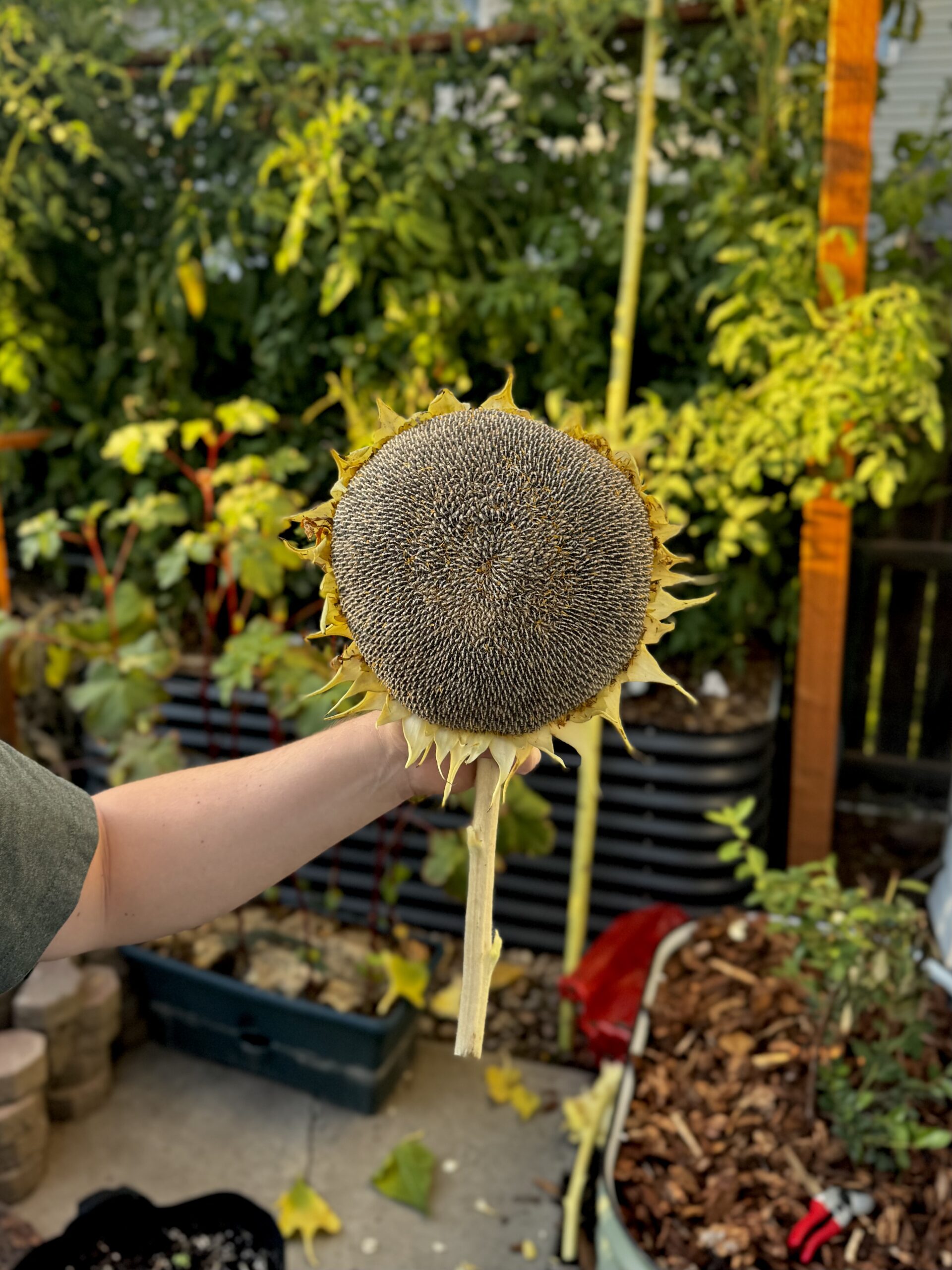


So cool plants can adapt like this!
The hanging method helped me utilize a lot of space I wasn’t using! And so fun to try out